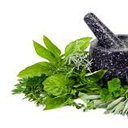CE-DAD Determination of Scutellarein and Caffeic Acid in Abelia triflora Crude Extract.
Keywords
Abstract
A precise, accurate, selective and sensitive capillary electrophoresis method using a diode array detector was developed for the first time for the determination of both scutellarein (SLN) and caffeic acid (CAA) in prepared Abelia triflora extract. Electrophoretic analysis was performed using a background electrolyte solution consisting of borax buffer (40 mM, pH 9.2) and a 200-nm detection wavelength. This method was fully validated according to The International Council for Harmonisation of Technical Requirements for Pharmaceuticals for Human Use (ICH) guidelines. The method was linear in the concentration range 2.5-100 μg/mL and it allowed the determination of both compounds with high degree of recovery (%Er < 2%) and intra-day and inter-day precision (relative standard deviation values <2%) and method robustness was also assessed by the low values of %RSD < 2% obtained after small deliberate changes in the method parameters. The contents of SLN and CAA were calculated using both the external standard and standard addition methods. Analysis of the ethyl acetate fraction of A. triflora revealed that SLN and CAA were found in concentrations of 0.46 mg/g and 2.10 mg/g, respectively, in the ethyl acetate fraction and 0.29 and 1.32 mg%, respectively, in the dry plant leaves.


